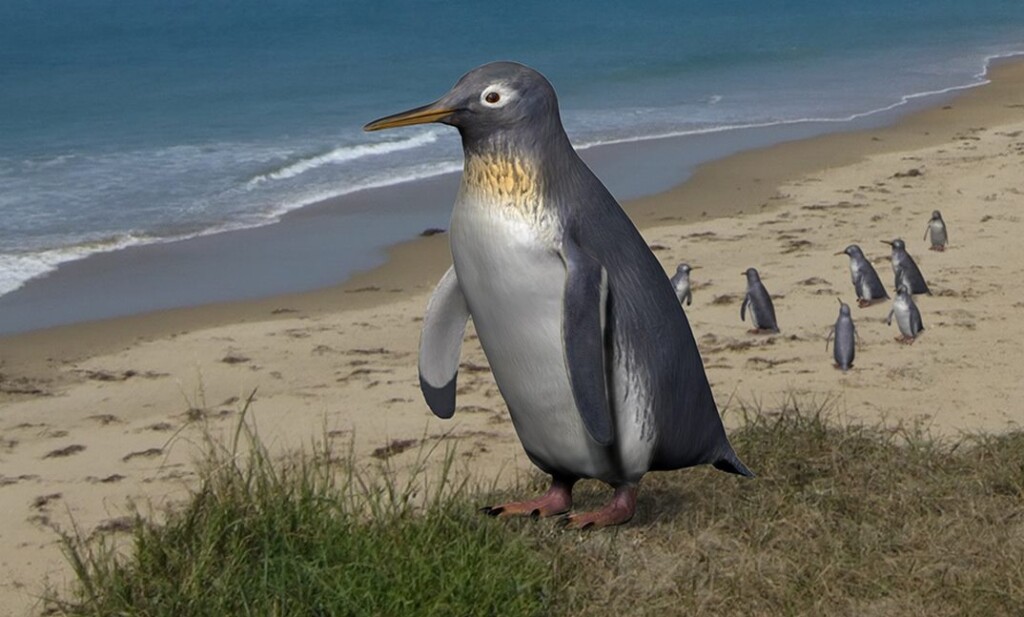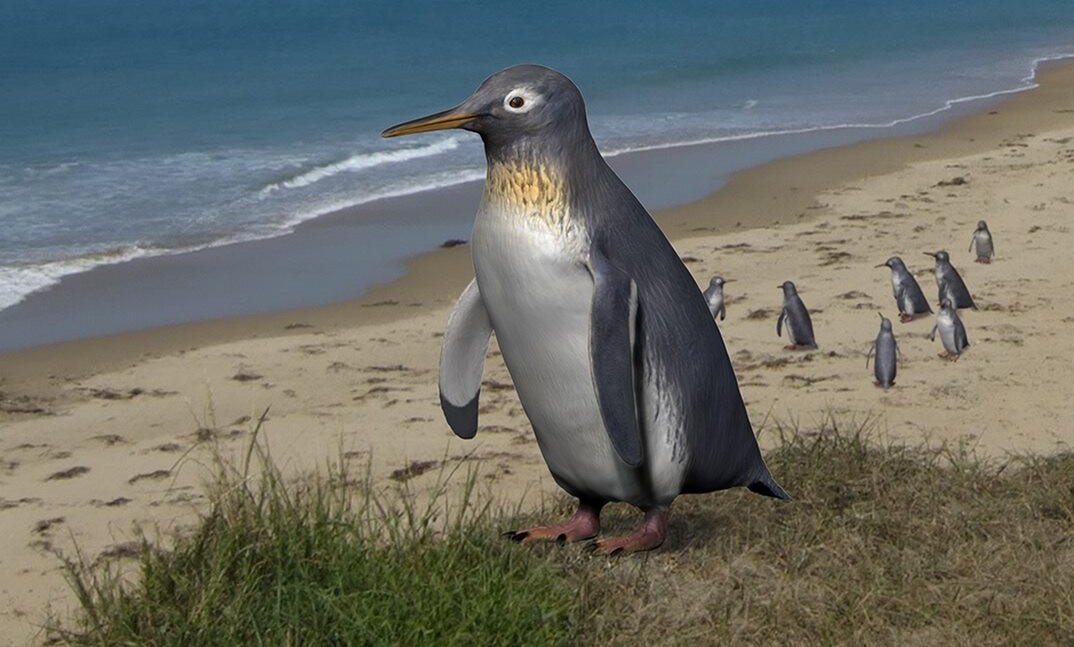
Sometimes, certain aspects of an animal’s biology can seem completely redundant, such as the tiny arms of a T. rex, or wings on a flightless bird.
But thanks to a recent study of fossilized penguin wings, researchers were able to pinpoint when these birds had turned their seemingly pointless wings into powerful diving aides.
A joint research team of New Zealand and Japanese scientists analyzed three bones found by a late paleontologist in the Hakataramea Valley on New Zealand’s south island.
Named Pakudyptes hakataramea, the fossils belonged to a diminutive penguin about the same size as the modern little blue penguin, the smallest in the world. Living 24 million years ago, Pakudyptes already had adaptions in its bone structure meant for diving.
Researchers from the University of Otago in New Zealand, the Okayama and Osaka universities in Japan, along with the Ashoro Museum of Paleontology, examined three bones: a humerus, femur, and ulna.
Pakudyptes fills a morphological gap between modern and fossil penguins, says the lead author on the study, Dr. Tatsuro Ando at the Ashoro Museum. The humerus and ulna in particular highlight how penguins’ wings have evolved.
“In particular, the shape of the wing bones differed greatly, and the process by which penguin wings came to have their present form and function remained unclear,” Dr. Ando said.
“Surprisingly, while the shoulder joints of the wing of Pakudyptes were very close to the condition of the present-day penguin, the elbow joints were very similar to those of older types of fossil penguins.”
“Pakudyptes is the first fossil penguin ever found with this combination, and it is the ‘key’ fossil to unlocking the evolution of penguin wings,” he concluded in a statement from Otago University NZ.
Co-author Dr. Carolina Loch, from Otago’s Faculty of Dentistry, says analysis of the internal bone structure conducted at the Faculty of Dentistry, with a comparison of data on living penguins provided from the Okayama University of Science, shows these penguins had microanatomical features suggestive of diving.
DIG INTO THE FOSSIL RECORD:
- Paleontologists Hunted for This Giant Bird Skull for Over a Century–Finally, a Complete ‘Thunderbird’
- Newly Discovered Fossil Named For David Attenborough Pushes Back Era of Toothless Birds by 50 Million Years
- Long Before Trees Overtook the Land, Our Planet Was Covered by Giant Mushrooms
- New Study of Triassic Fossils Reveal the Origins of Living Amphibians Through a Tiny “Funky Worm”
Modern penguins have excellent swimming abilities, largely due to their dense, thick bones that contribute to buoyancy during diving.
In Pakudyptes, the bone cortex was reasonably thick although the medullary cavity, which contains bone marrow, was open, similar to what we see in the modern little blue penguin, which tends to swim in shallow waters.
The ability for Pakudyptes to dive and swim comes down to the distinctive combination of its bones. Bones such as the humerus (upper arm) and ulna (forearm) show areas for attachment of muscles and ligaments which reveal how the wings were being used to swim and maneuver underwater.
“Penguins evolved rapidly from the Late Oligocene to Early Miocene and Pakudyptes is an important fossil from this period. Its small size and unique combination of bones may have contributed to the ecological diversity of modern penguins,” Dr. Loch said.
The open medullary and small stature of the penguin bear witness to how quick this diversification was, as almost all fossilized penguin ancestors were large—over 3 feet at least, and some standing as tall as 6 feet.
SHARE This Important Link In The Fossil Chain Of The Famous Flightless Bird…




















